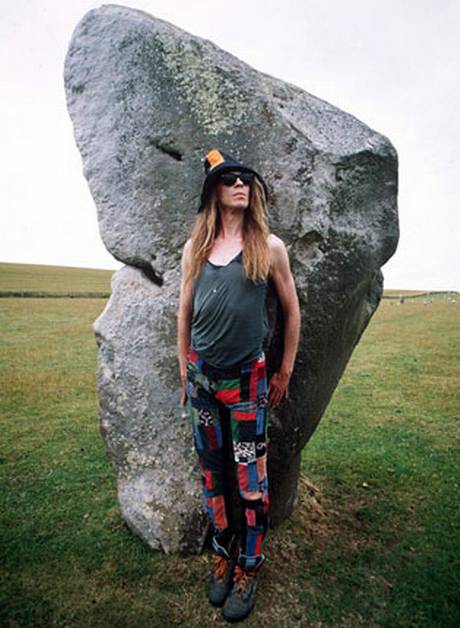If you’re a Facebook friend of Sonic Youth (and let’s face it, they’re an easy bunch to befriend), you get to see all sorts of stuff, including images of the band when they were more youthful, if not necessarily more sonic. The above picture of them walking, or at least standing, at Stonehenge must have been taken pre-1985, before Steve Shelley was the drummer, before Kim Gordon was even a blonde.
I walked around Stonehenge for the first time last year. I’d driven past it in a car a few times but for some reason had never got out and investigated. These days the casual visitor can’t get very close to the stones at all, and is kept at a distance and has to walk around a pedestrian loop, though I think special “walk among the stones” tours are also available at certain times. Once it was evidently much easier.
Very few of the visitors seemed to be experiencing any deep mystical vibe, but
thinking of Britain’s ancient stones led me to Julian Cope, and eventually via
the eternal present of the internet, to an interview he did with Sirona Knight and Michael Starwyn at the time his album 20 Mothers was released, in 1995. The link to the full interview is here:
I haven’t followed Cope’s career all that closely but I know he
wrote a book, and did a TV series titled The
Modern Antiquarian, which everybody seems to think is a pretty good guide
to the ancient sites of Britain. There’s
now a website with the same name. What
I didn’t know, but should probably have guessed, is that he’s apparently a great walker.
In the interview he says he visited over 500 ancient
sites, and walked along ancient
trackways. "I walk on the sacred landscape with a dictaphone and I sing my
songs straight out as the Spirit moves me. That's an artist's duty--to
recognize what flame moves within him and I recognized a totally different
flame."
“I write on the land. I
just walk. Normally it all comes at once. I've walked over 1500 miles in the
last 8 months, always on the neolithic trackways. The whole Avebury system is
this huge grid of neolithic trackways, ceremonial trackways. Whenever I am
reenacting these walks, I am reenacting the walks of people who repeated these
ritual walks for 1500 years. I am now able to descend into the mist, into the
other dimension.”
Well,
there was certainly none of that going on at Stonehenge when I was there, which
is a shame. Cope also wrote a song titled
Gotta Walk. Lyrics here:
Greedhead
policestate
Admit
your mistake
Paranoid
Paranoia
Here to
go, baby
Here to
beat Daddy
Here to
catch a falling star
Save
yourself some money
Run
behind a taxi
Walk
behind a funeral car.
Doomy
doomy doomy
Yet I'm
feelin' gloomy
Still I
hate to screw my Ma...
I gotta
walk - walk walk walk - gotta walk - I'm hip... I'll walk
Video here if that's the kind of thing that you're into:






























